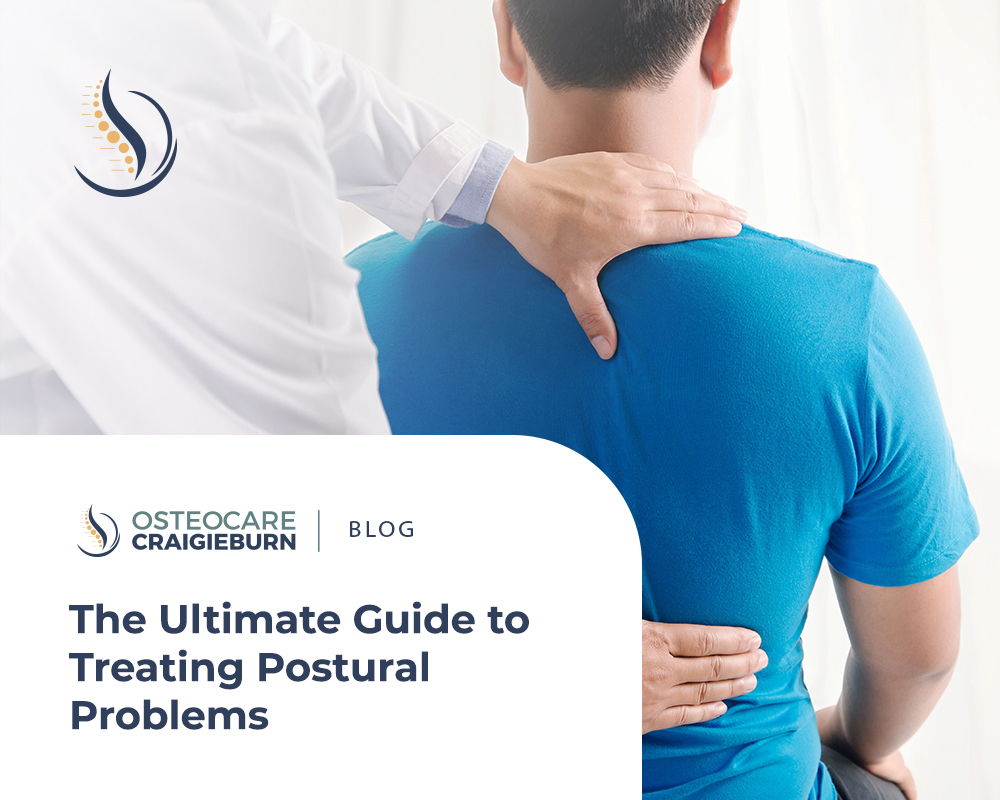Posture refers to how the spine aligns to the head, shoulders, and hips when standing, walking, or sitting. We take it for granted and hardly think about it, but it has real consequences to our overall health and wellbeing.
Good posture keeps the body flexible while maintaining proper balance. With many Australians spending over 60 hours per week sedentary, it’s no wonder that bad posture has become a real and visible health problem.
The good news is that there are several easy steps you can take to correct, treat, and prevent postural problems for your overall physical health and mental wellbeing.
This ultimate guide explores what good and bad posture are, how bad posture affects health, and how to correct and prevent postural problems.
So grab a cuppa, sit up straight, and read on.
What is Good Posture?
Posture describes how you hold your body when sitting or standing. These terms further define as:
- Dynamic posture – how you hold your body when moving, e.g., when bending, walking or running
- Static posture – how you hold your body when not moving, e.g. when sitting, standing, or sleeping
When someone has good posture, their spine maintains the natural curves at the neck, mid-back, and lower back, much like a child’s posture. The head stands above the shoulders, with the top of the shoulder over the hips.
What is Bad Posture?
When the spine’s natural curves at the neck, mid-back, and lower back are misaligned, lousy posture occurs.
Lousy posture is easy to develop, given today’s sedentary and repetitive lifestyle, and it may take a while to correct. The condition may also develop due to:
- Big breasts that affect shoulder placement
- Congenital conditions like scoliosis or leg length discrepancy
- Excess weight
- Low self-esteem, depression, or PTSD
- Pregnancy
- Wearing poor quality shoes
How Do Postural Problems Affect Health?
Postural problems have a significant impact on health and wellbeing. They cause a misalignment of the musculoskeletal system, wearing it down and making it more prone to injury.
Bad posture also decreases your overall flexibility, affecting your balance and how your joints move, increasing the risk of falling. This
condition could also cause respiratory and digestive problems.
How Bad Posture Causes Spinal Misalignment
Bad posture can lead to various physical problems, but the most debilitating is spinal misalignment. This condition manifests as:
- Flatback – a condition where the lower spine loses some of its normal curvature
- Forward head posture – a condition that exerts more head weight and strain on the spine
- Kyphosis – an extreme form of forward-head posture
- Swayback – a condition in which the spine curves too far inward
How Bad Posture Causes Chronic Pain
Poor posture can tighten up the space between the nerves of vertebrae between the head and arms. It can also cause “rolled shoulders”, putting pressure on the nerves that go to the arms through the shoulder area. Both of these conditions lead to chronic pain.
Other pain problems that postural problems can create include:
- Migraines
- Mid and Lower Back Pain
- Sciatica
How Bad Posture Causes Respiratory Problems
Bad posture can also cause breathing problems.
When you slouch, it tightens the secondary breathing muscles such as the levator or scalene, making breathing more difficult. This tightness, in turn, hinders oxygen from getting to the brain and other parts of your body and limits the ability of the rib cage to expand.
How Bad Posture Causes Digestive Problems
Postural problems can also cause slow digestion and heartburn. Slouching, especially after a meal, can trigger acid reflux and heartburn, and eventual stomach pain.
How to Correct Postural Problems
Preventative medicine and good postural habits are the best way to correct postural problems. There are several exercises and practices that you can adopt to help you fix your posture or even prevent postural issues from developing in the first place.
These include:
Improving posture when sitting
- Avoid crossing your legs when sitting
- Fully support your back using a back pillow
- Keep your ankles in front of your knees and your feet on the floor or a footrest
- Keep your elbows close to your body at 90° – 120°
- Periodically switch sitting positions and stretch your muscles
- Support your thighs and hips with a well-padded seat
Improving posture when standing
- Keep your feet about shoulder-width apart
- Keep your head level
- Put most of your weight on the balls of your feet
- Stand up straight and tall with your shoulders back and your stomach in
Preventing postural problems
- Avoid a sedentary lifestyle; stay active
- Breathe more deeply
- Buy an orthopedic mattress
- Maintain a healthy weight
- Practice walking properly
- Use ergonomic chairs and furniture
- Wear comfortable, low-heeled shoes
Where to Seek Help for Postural Problems
If you already have postural, visiting an osteopath – a professional that focuses on the whole body’s health, including the spine, soft tissues, and nervous system – can help you feel better and get your body back on track.
Osteopaths use various treatments, including spinal manipulation and soft tissue massage, to correct these postural problems. These processes include:
- Massaging and stretching the muscles in misalignment
- Mobilising the spine into balance
- Strengthening the weak postural muscles
- Teaching proper ergonomics
- Using a posture corrector appliance such as a posture brace, taping, or shoe lift to reduce hyperkyphosis, improve your gait, and help you stand straighter.
If you need assistance with postural problems in Craigieburn, OsteoCare Cragieburn can help. We are devoted to returning your body to a balanced state using proven and quality treatment techniques.
Contact us online or call 1800 067 836 to book your consultation today.
